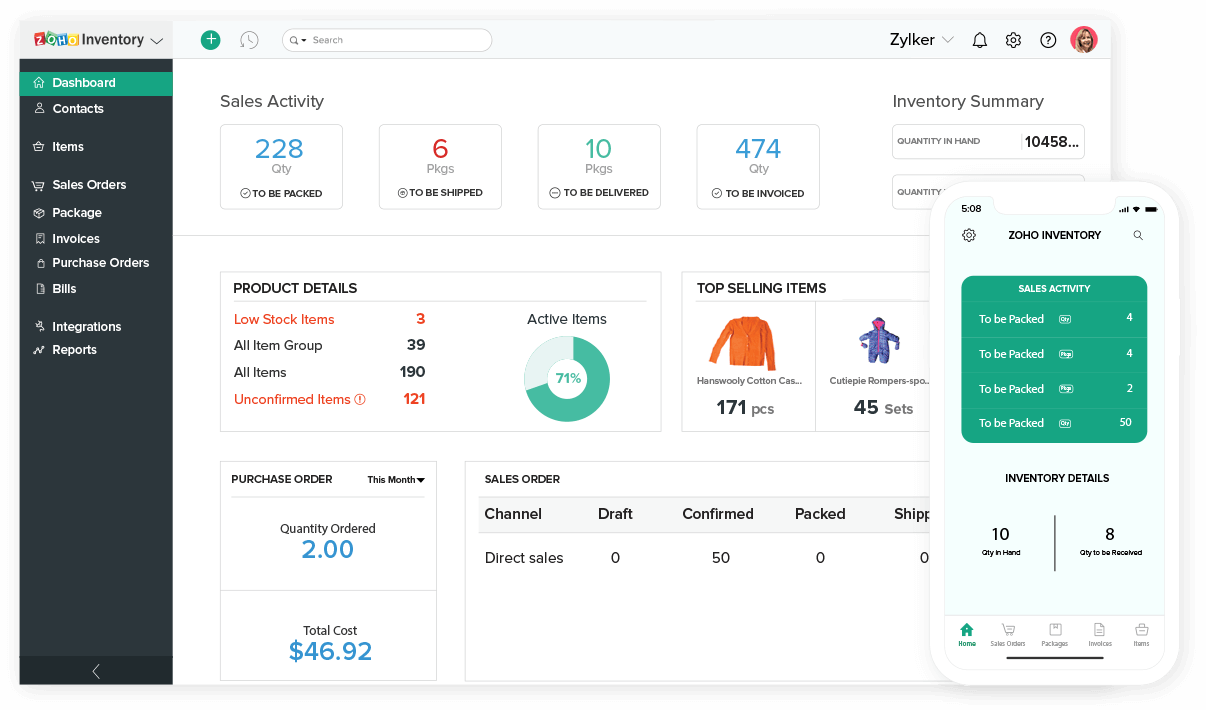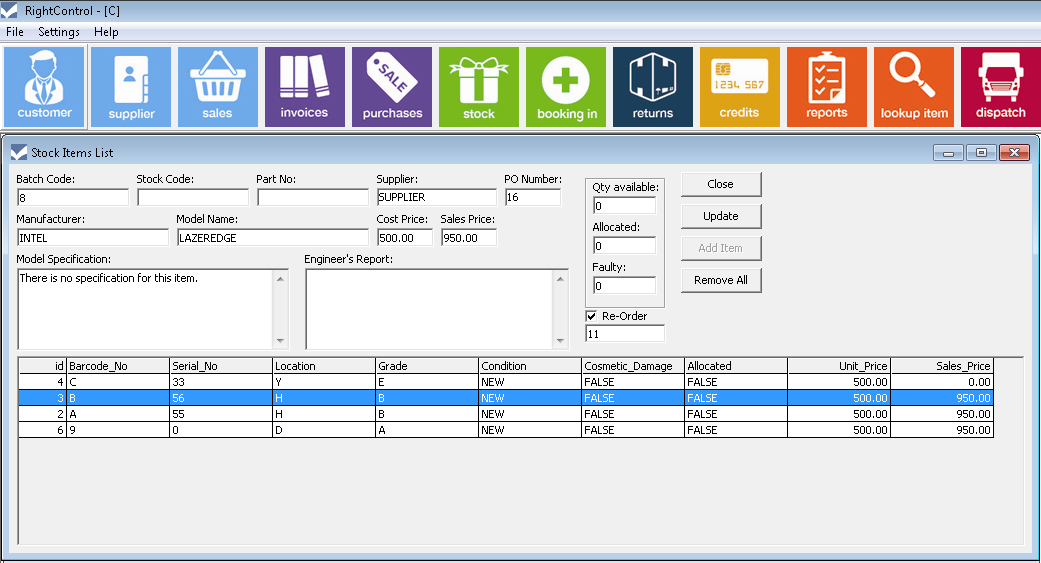Best inventory program for small business – Navigating the world of inventory management for small businesses can be a daunting task. With the right inventory program, however, you can transform your operations, reduce costs, and elevate customer satisfaction. Dive into our comprehensive guide to discover the best inventory program for your business and unlock the potential for growth and efficiency.
In this guide, we’ll delve into the common challenges faced by small businesses in managing inventory, explore the essential features to look for in an inventory program, and provide an overview of the different types available. We’ll also highlight the benefits of implementing an inventory program and guide you through the key factors to consider when making your selection. Finally, we’ll showcase examples of popular inventory programs tailored specifically for small businesses, helping you make an informed decision that will drive your business forward.
Inventory Management Challenges for Small Businesses

Managing inventory effectively is crucial for small businesses, but it often presents a range of challenges that can hinder operations and profitability. These challenges stem from various factors, including limited resources, manual processes, and fluctuating demand.
Inefficient inventory management can lead to stockouts, overstocking, and inaccuracies, which can result in lost sales, increased costs, and poor customer satisfaction. Small businesses, in particular, may struggle with these challenges due to their limited resources and capacity.
Common Inventory Management Challenges
- Stockouts: Running out of stock can lead to lost sales and dissatisfied customers. It can also damage the business’s reputation and hinder growth.
- Overstocking: Holding excessive inventory ties up capital, increases storage costs, and can lead to product obsolescence or spoilage.
- Inaccuracies: Manual inventory tracking can be prone to errors, leading to discrepancies between physical inventory and records. This can result in poor decision-making and inefficient operations.
- Limited Resources: Small businesses often have limited resources, including staff and budget, which can make it challenging to implement and maintain effective inventory management systems.
- Fluctuating Demand: Small businesses may face unpredictable demand, making it difficult to forecast inventory needs accurately. This can lead to either stockouts or overstocking.
Features to Consider in an Inventory Program
When selecting an inventory program for your small business, it’s crucial to consider features that align with your specific needs and operations. Here are some essential features to keep in mind:
Tracking Stock Levels
Effective inventory management requires accurate and real-time tracking of stock levels. Look for a program that allows you to monitor inventory levels across multiple locations, ensuring you have the right amount of stock on hand to meet customer demand.
Managing Multiple Locations
If your business operates from multiple locations, choose a program that can manage inventory across these locations seamlessly. This will help you optimize stock levels, prevent overstocking or understocking, and ensure efficient inventory distribution.
Forecasting Demand
Accurate demand forecasting is essential for maintaining optimal inventory levels. Look for a program that provides demand forecasting capabilities, using historical data and other relevant factors to predict future demand patterns. This will help you plan your inventory accordingly and avoid stockouts or excess inventory.
Generating Reports, Best inventory program for small business
Regular reporting is crucial for monitoring inventory performance and making informed decisions. Choose a program that generates comprehensive reports, including stock status reports, inventory turnover reports, and profit and loss reports. These reports provide valuable insights into your inventory management practices and help you identify areas for improvement.
Types of Inventory Programs

Inventory programs are designed to assist small businesses in managing their inventory effectively. They offer various features to streamline inventory tracking, reduce errors, and improve overall efficiency. These programs come in different types, each with its own advantages and disadvantages.
Cloud-based Inventory Programs
Cloud-based inventory programs are hosted on remote servers and can be accessed from any device with an internet connection. They offer several benefits, including:
- Accessibility: Cloud-based programs allow users to access their inventory data from anywhere, anytime.
- Collaboration: Multiple users can access and update the inventory simultaneously, enhancing collaboration and reducing errors.
- Scalability: Cloud-based programs can easily scale to meet the growing needs of a business.
However, cloud-based programs may have some drawbacks:
- Internet dependency: Cloud-based programs require a stable internet connection to function, which can be a limitation in areas with poor connectivity.
- Security concerns: Cloud-based programs store data on remote servers, raising concerns about data security.
Desktop Inventory Programs
Desktop inventory programs are installed on a local computer and do not require an internet connection. They offer the following advantages:
- Offline access: Desktop programs can be used even when there is no internet connection, providing uninterrupted inventory management.
- Customization: Desktop programs can be customized to meet specific business requirements.
- Security: Data is stored locally, reducing the risk of data breaches.
On the downside, desktop inventory programs have some limitations:
- Limited accessibility: Desktop programs can only be accessed from the computer they are installed on.
- Scalability: Desktop programs may not be able to scale easily as a business grows.
Mobile Inventory Programs
Mobile inventory programs are designed for use on smartphones and tablets. They provide the following benefits:
- Mobility: Mobile programs allow users to manage inventory on the go, from anywhere.
- Barcode scanning: Mobile programs often integrate with barcode scanners, simplifying inventory tracking.
- Real-time updates: Mobile programs provide real-time updates on inventory levels, ensuring accuracy.
However, mobile inventory programs may have some limitations:
- Limited functionality: Mobile programs may not offer the same range of features as desktop or cloud-based programs.
- Security concerns: Mobile devices can be more vulnerable to theft or loss, raising security concerns for inventory data.
Benefits of Using an Inventory Program
Implementing an inventory program can significantly benefit small businesses by enhancing their operational efficiency and overall profitability.
The key advantages of using an inventory program include:
Improved Stock Control
An inventory program provides real-time visibility into stock levels, allowing businesses to track the flow of goods accurately. This enables them to:
- Prevent stockouts and overstocking, ensuring optimal inventory levels.
- Identify slow-moving items and optimize purchasing decisions.
- Monitor stock levels across multiple locations, if applicable.
Reduced Costs
Effective inventory management can lead to significant cost savings for small businesses:
- Reduced inventory holding costs by minimizing excess stock.
- Lowered purchasing costs through bulk discounts and optimized ordering.
- Improved efficiency, reducing labor costs associated with manual inventory tracking.
Enhanced Customer Satisfaction
A well-managed inventory program contributes to enhanced customer satisfaction:
- Increased product availability, reducing the likelihood of backorders.
- Improved order fulfillment accuracy, ensuring timely and correct deliveries.
- Enhanced communication with customers regarding stock availability and order status.
Factors to Consider When Choosing a Program
Selecting an inventory program for your small business requires careful consideration of several key factors. These include:
Business Size
The size of your business will influence the type and features of the inventory program you need. Smaller businesses may require a simpler program with basic functionality, while larger businesses will need a more comprehensive program with advanced features.
Industry
The industry in which your business operates can also impact the choice of inventory program. Different industries have unique inventory management needs, and choosing a program tailored to your specific industry can streamline your operations.
Budget
The cost of the inventory program is an important consideration for any business. Determine your budget and compare the pricing of different programs before making a decision.
User-friendliness
The ease of use of the inventory program is crucial. Choose a program that is intuitive and easy to navigate, ensuring that your team can adopt it quickly and efficiently.
Examples of Inventory Programs for Small Businesses

Choosing the right inventory program can be a daunting task for small businesses. To simplify the process, we’ve compiled a table comparing popular options based on features, pricing, and reviews.
Table of Inventory Programs
| Program | Features | Pricing | Reviews |
|---|---|---|---|
| QuickBooks Online | – Multi-location inventory management – Barcode scanning – Purchase order management |
– Starting at $25/month | – 4.5/5 stars on Trustpilot |
| Zoho Inventory | – Advanced reporting and analytics – Integration with Zoho CRM – Multi-currency support |
– Starting at $29/month | – 4.2/5 stars on G2 |
| NetSuite | – Enterprise-level inventory management – Demand forecasting – Supply chain management |
– Starting at $999/month | – 4.0/5 stars on Gartner |
| Shopify | – E-commerce inventory management – Point-of-sale integration – Shipping and fulfillment |
– Starting at $29/month | – 4.7/5 stars on Shopify App Store |
| Fishbowl Inventory | – Warehouse management – Inventory optimization – Kitting and assembly |
– Starting at $499/month | – 4.6/5 stars on Capterra |
Implementation and Best Practices
Successful implementation and utilization of an inventory program necessitate adherence to specific guidelines. These include ensuring data accuracy, conducting regular audits, and providing comprehensive staff training.
Data accuracy is paramount. Regularly verify inventory counts against physical stock to identify and rectify discrepancies. Implement a system of checks and balances to minimize errors in data entry and ensure data integrity.
Regular Audits
Regular audits are crucial for maintaining inventory accuracy and identifying potential issues. Establish a schedule for periodic audits and assign responsibility for conducting them. During audits, thoroughly examine inventory records, compare them to physical stock, and investigate any discrepancies.
Staff Training
Thoroughly train staff on the inventory program and its proper usage. This includes understanding how to enter data accurately, conduct audits, and generate reports. Provide clear instructions and ensure staff members have access to resources and support when needed.
Epilogue
Choosing the best inventory program for your small business is a crucial step towards optimizing your operations and achieving long-term success. By carefully considering the factors Artikeld in this guide, you can select a program that aligns with your specific needs and empowers you to manage inventory effectively. Embrace the power of technology and unlock the full potential of your small business with the right inventory program.
FAQ Explained: Best Inventory Program For Small Business
What are the common challenges faced by small businesses in managing inventory?
Small businesses often struggle with maintaining accurate stock levels, managing multiple locations, forecasting demand effectively, and generating comprehensive reports.
How can an inventory program benefit my small business?
An inventory program can improve stock control, reduce costs through optimized purchasing and reduced waste, and enhance customer satisfaction by ensuring product availability.
What factors should I consider when choosing an inventory program?
Key factors to consider include the size of your business, your industry, your budget, and the user-friendliness of the program.